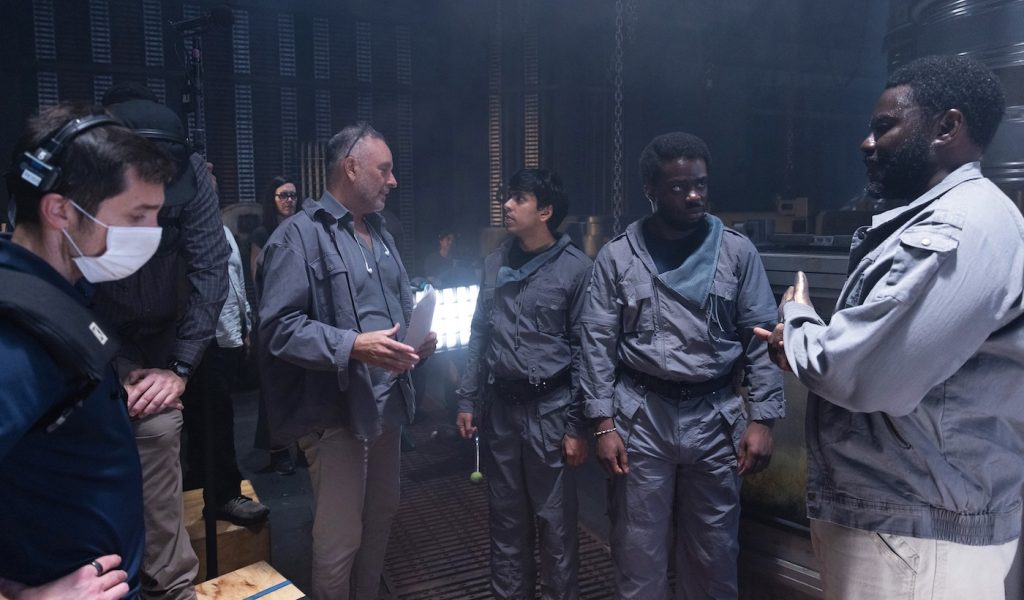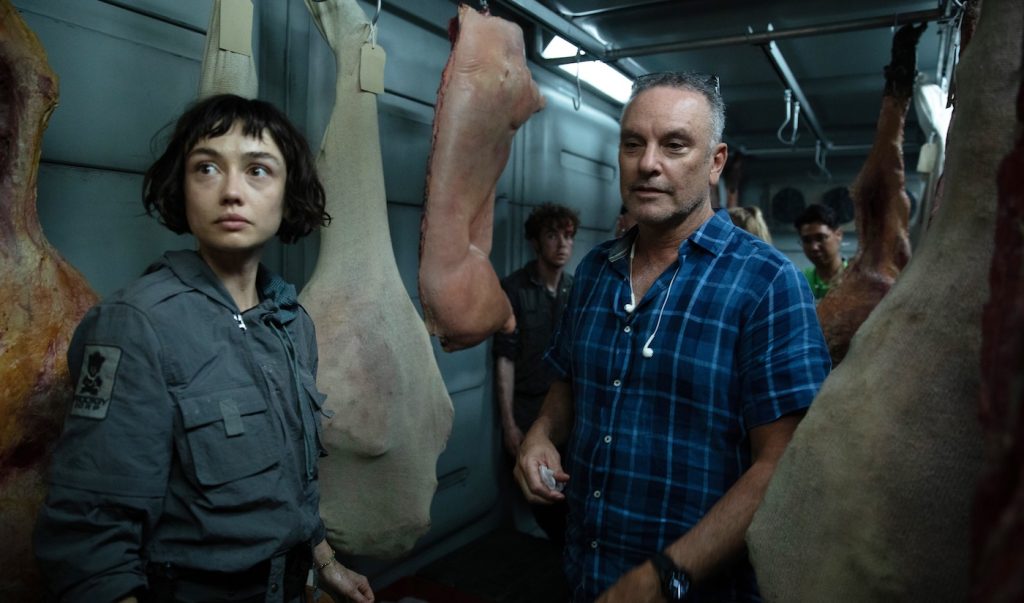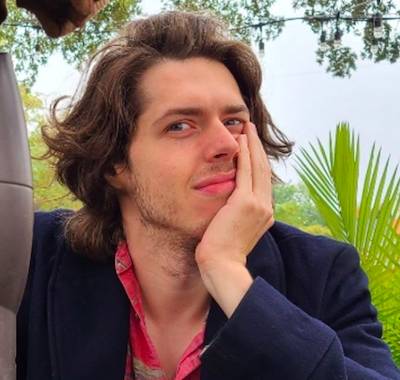“Alien: Earth” Cinematographer and Director Dana Gonzalez on Bringing Cinema’s Most Iconic Monster to TV
On Earth, everyone can hear you scream. No apologies for the dreadful play on the classic logline for Alien, which continues to reach new, strange heights in FX’s Alien: Earth, created by Fargo‘s Noah Hawley. Cinematographer and director Dana Gonzalez establishes the expressive vision in the pilot, titled “Neverland,” which introduces a young, terminally ill girl named Marcy Hermit (Florence Bensberg) to a future world in which she’ll survive, but not quite as herself. Instead, her consciousness will be uploaded into the body of a young woman, entirely synthetic, named Wendy (Sydney Chandler), thanks to technology invented and lorded over by a tech trillionaire who goes by “Boy Kavalier” (Samuel Blenkin) and his company, Prodigy.
The world that Marcy-turned-Wendy will exist, and potentially thrive in, is one dominated by technology and the five behemoth corporations who control it—Weyland-Yutani (made famous in the Alien film franchise), Prodigy, Lynch, Dynamic, and Threshold. When a Weyland-Yutani research vessel carrying alien specimens snatched from their home planets, including one of the most iconic monsters in all of cinema (and now TV), the Xenomorph, crashes into a Prodigy-owned building in the city of New Siam, the world order is about to be shaken up. Gonzalez was a major creative force in establishing the world of Alien: Earth and the stakes at play, particularly in the thrilling combo of episodes two and three, “Mr. October” and “Metamorphosis,” both of which he directed.
In the pilot, “Neverland,” Wendy searches for her brother, Joe Hermit (Alex Lawther), among the crash site, where the Xenomorph has slaughtered almost everyone aboard the Weyland-Yutani ship, and the nearby apartment building is swiftly becoming its hunting ground. Earth is now under a threat that might prove too unstable even for the corporate overlords to handle.
Recently, Gonzalez spoke with The Credits about portraying some of the franchise’s more iconic signatures in his visceral episodes in one of the year’s standout series.
Earth was always talked about as a living hell in the franchise. Here, this is the first time fans get to experience it. How did you and Noah want to depict Earth?
Noah had this whole idea of a wet, overgrown world. And then, between the development, which is about three years before shooting, and the world, the world was changing too. There’s the billionaire situation, now trillionaires, and the Elon Musks of it all that started taking on a whole new meaning. You now have that cerebral atmosphere that people can tap into. If we’re feeling this pressure now from that class of people, it’s likely to be even worse in the future. There’s an inequality in the distribution of wealth, and there’s climate change. These people are dealing with possibly the end of the world. Then you add five corporations that will eventually be two corporations that screw up the world. So, it’s more than just a physical, atmospheric place.

Seeing the rich get eaten is also fairly new to the series. In episode two, there’s a Barry Lyndon party turned into a slaughterhouse by a Xenomorph. How’d you land on the Last Supper image?
It can be bombastic. It’s already ludicrous. The whole thing is like this [rich] guy’s just like, “No, we’re having this party. I don’t care if a ship crashed into the building.” And so, that image of them at the table — I worked with a concept artist. I wanted it to be the Last Supper that a Xenomorph destroyed. I wanted to have this iconic image that you could tap into.
Noah wanted to steer away from the more human qualities of the Xenomorph and approach the alien more like a cockroach. What did that direction mean to you?
You couldn’t just build the tension and then cut to the Xenomorph, and then boom, he’s cooked. There’s more story that has to be told, even in the Lordship scene — the Xeno jumping and chasing and pinning Hermit. You’re showing more than ever, so you try to get the suit in a great way. The physicality – it’s flying and jumping around. With full CGI, we have more control, but it’s never going to be the tactility of how we photographed it. With eight hours, how many minutes will effectively be spent with the Xenomorph? More than any other movie would have to deal with. In episode seven, you see it outside in its full glory.
What did you discover in early camera tests about which lighting works and doesn’t work for a Xenomorph suit?
There were early tests in New Zealand with Wētā in the first year. You put it on camera, adjusting the color and the sheen. And then in Bangkok, we did the more serious tests. Even in that [party] scene, you’re not able to light it where you just see the Xenomorph in such a way that you’re seeing all these reflective areas and everything. So, a product shot — actually in space, moving around — you’re lighting it more holistically than you’ve ever done. Hopefully, the Xenomorph was presented in a much more controlled lighting space. You have to make this thing scary.
In your eyes, how do you make it scary?
You want to see the details of it, and find out what that is. And so, it was an evolution of designing the suit, the finishes of the suit, and the final testing in Bangkok. Then you start bringing it into the physical space, and you have wires on it, and it’s moving around. Hopefully, you nail all those things throughout that process, knowing that it will work. Adding the goop, does that work as effectively in one shot as the other? When you’re doing practical stuff and you have a time element, it’s tough because it’s not like in CGI, where you could tweak it until you think it’s perfect. So, if suddenly the drool isn’t working as well from the earlier shots, the payoff is that it’s practical, and I think that’s better. So, if the drool is not as good in one shot as in another shot, you’re still winning.
As a director, you had the privilege of shooting a close-up of the iconic egg. What details pop when you’re up that close? How do you want to light it just right?
You start with the design, and you keep hitting it. You keep hitting hard, you add details, and then you photograph it. Where does it photograph the best? How does the color come across? If you look at even Alien, the egg kind of changes a little bit from shot to shot. When you first see the egg, and then when you see the clear egg, or when you see the facehugger through it as it’s coming out — it’s almost like three different eggs. You realize that ours is definitely more consistent because we had to nail it down. But look, we have the luxury of looking at Alien. We could always say, “How did Ridley make this work?” Here, there’s a modern feel to it. There are new materials that didn’t exist in those days. But it does start with the original, thank God.
A few of the franchise’s practical visual elements remain strong — smoke, shadow, and rain. As a cinematographer and director, how do you master those elements?
I’m always trying to have an atmosphere in everything I do. I don’t feel like I’ve ever nailed it. I’m not sure if I will ever nail it perfectly to what I think it is. I love it when I see things that have an atmosphere. I like places where, as an audience member, I’m transported into a different environment. I love being thrown into this heavy feeling and heavy texture. That, to me, always wins. I’m always taken out of things — like period pieces or even things like this — where they’re just too real. Because I do think that’s a big part of it, even in your earlier question about [showing] Earth.

How so?
You want to feel the wetness and the steam, all kinds of different things going on. We use practical effects for the atmosphere and real water. I have filtration. You’re finding some lenses that give that. So, that’s my big thing that, hopefully, by the time I retire, I’ll say, “Yep, there it is. That’s what I’ve been trying to fight for my entire career.” Obviously, this one has maybe a heightened version of that, but I try to do it in everything I do.
Alien: Earth is streaming on Hulu.
Featured image: Sydney Chandler in “Alien: Earth.” CR: Patrick Brown/FX



